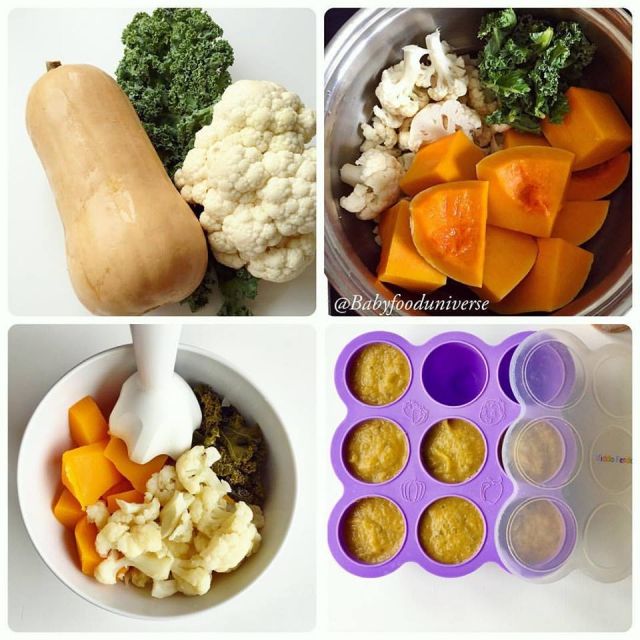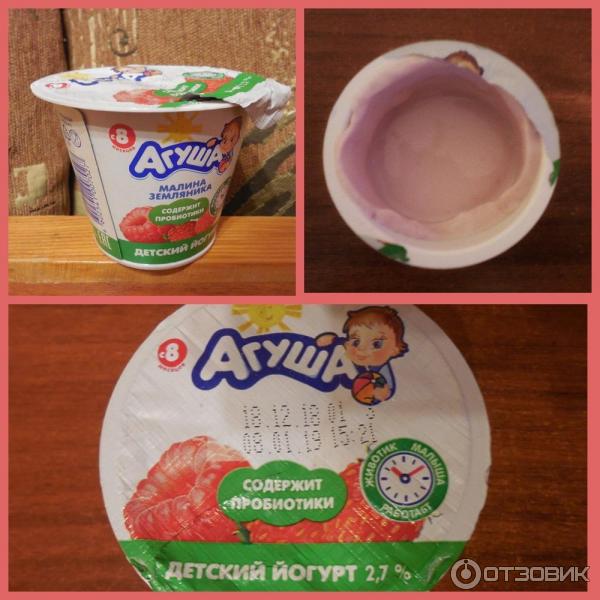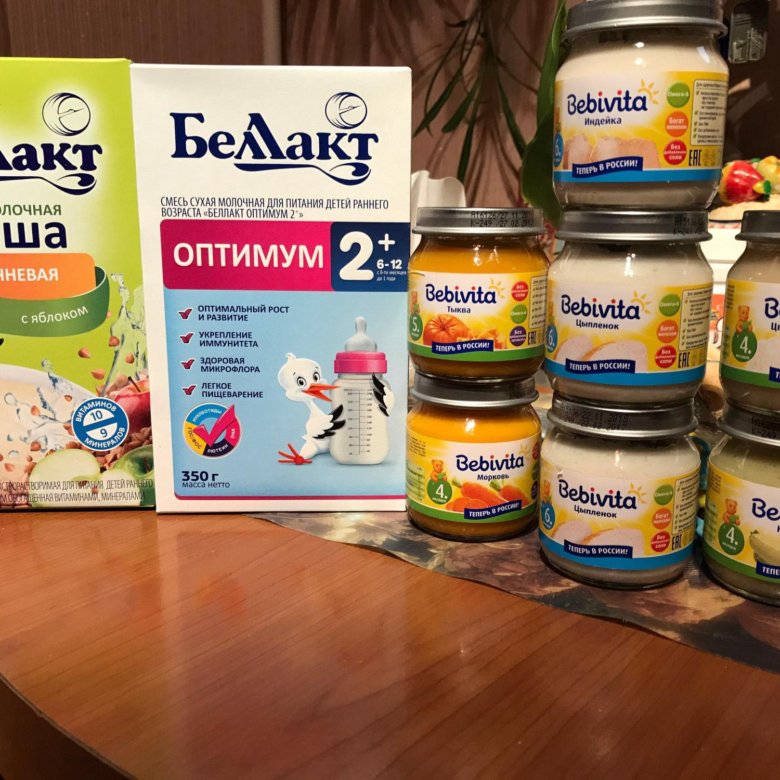Butternut squash finger food baby
Ways To Prepare Butternut Squash For Baby (BLW)
BABY | Baby Led Weaning | Finger Foods | Grain free | TODDLER | Vegan
122 shares
Jump to Recipe - Print Recipe
Butternut squash is popular amongst baby food recipes thanks to the sweet, slightly nutty taste. On top of providing a host of health benefits, the butternut squash is very versatile and can be prepared in many ways – steamed, roasted or boiled. You can make delicious puree combinations, use as finger food or for baby led weaning feeding.
Butternut Squash For Babies
Butternut squash is perfect for your baby’s first solid food, once cooked it’s sweet, easy to chew, and is full of nutrients (Vitamin A and C specifically). Also did you know that a cup of cubed butternut squash provides more potassium than the amount available in a banana? It’s best to introduce butternut squash to kids when they’re babies and toddlers, this will help them develop healthy eating habits early and probably later in life.
How To cook Butternut Squash For Baby
First peel the butternut squash, cut it in half the long way and scoop out the seeds with a spoon.
Cut into smaller pieces and then you can:
- Steam – bring 1 inch of water to boil in a saucepan fitted with a steamer basket and cover with a lid. How long to steam butternut squash? Butternut squash steams quickly – about 15-20 minutes, pierce with fork and check when it’s ready.
- Bake / Roast – here you have two options: if you want cubes or strips, it’s best to cut then bake. If you intend to serve with a spoon or make a butternut squash puree then cut your butternut squash in half lengthwise (no need to peel) and bake face down to trap the moisture inside.
 For a caramelized surface roast cut-side up. Roasting time is about 30-45 minutes, it depends on how big are the pieces. You can roast in advance and use to make a butternut squash soup later.
For a caramelized surface roast cut-side up. Roasting time is about 30-45 minutes, it depends on how big are the pieces. You can roast in advance and use to make a butternut squash soup later.
- Boil – this method is best when you make soups and purees as you would keep the water with all the nutrients that leached in there while boiling.
Butternut Squash For Baby Led Weaning
Just like baby led weaning with carrots or sweet potatoes, the butternut squash has a nice soft texture (when cooked), is nutritionally dense and is one of the best sources of vitamin A.
How To Cut Butternut Squash For Baby Led Weaning
You have two options:
- Peel and cut first, then bake / steam, OR
- bake in the oven first (cut in half) then cut and serve to your baby.
This post may contain affiliate links. To read the disclaimer policy See This.
For a fun crinkle-cut shape use a crinkle knife, it’s quick to cut and easy for babies to hold with their little hands because it doesn’t slide off.
You can also cut into pieces (cubes, strips, mashed with a fork, as a puree or small sized half moon shapes.
Also bear in mind that if you prepare the butternut squash as finger food, it should be cooked until tender but still firm enough to keep its integrity.
How To Serve Butternut Squash For Babies
Butternut Squash Baby Puree (Stage 1)
This involves making baby butternut squash puree by itself with a very smooth and soupy texture. This is usually suitable for babies between 5-8 months of age and 6+ months for baby-led weaning.
After baking, roasting or steaming, you just scoop out the soft flesh and puree butternut squash in a food processor or blender until smooth. Then you add water as needed to reach the desired consistency. No salt or spices needed.
Butternut Squash Baby Puree Combinations (Stage 2)
After several months of stage 1 single-ingredient purees, your baby will probably start expressing readiness for the next phase (stage 2): more kinds of food, thicker textures and larger portions. This is typical for babies 8 months of age and older.
This is typical for babies 8 months of age and older.
Here is what butternut squash puree combination you can try:
- steamed kale and butternut squash puree
- butternut squash and carrot puree
- butternut squash and cauliflower puree
- pureed butternut squash and cooked chicken or beef
- steamed broccoli and butternut squash puree
- cooked beans (black, white beans, chickpeas) and butternut squash puree
- steamed apples (or pear) and butternut squash puree
- peas and butternut squash puree
- mashed avocado and butternut squash puree
- pureed butternut squash with rice or oatmeal porridge
- puree cooked squash with a some broth or cream and add seasonings of your choice
- zucchini and butternut squash puree.
Butternut Squash Finger Food Recipes For Baby
- steamed (roasted) crinkle-cut butternut squash sticks
- roasted butternut squash cubes
- butternut squash muffins (just like these baby banana muffins, replace mashed banana with mashed butternut squash).

- butternut squash pancakes (use this baby banana pancakes as reference, by replacing banana with squash).
- butternut squash fritters
- waffles with grated butternut squash or pureed.
How To Store And Freeze Butternut Squash For Baby Food
Store leftover puree for 3-5 days at room temperature.
Freeze: spoon the butternut squash puree into ice-cube trays and freeze (defrost the small amounts when you need it.) Use silicone trays, they are really flexible and durable. Then pop the frozen cubes into a freezer bag or container and return to the freezer for a more convenient storage.
Thaw in the refrigerator. Do not freeze again.
If you have a chance buy fresh whole butternut squashes: when stored in a cool, dry place, the squash will last for months. And whenever you’re ready to cook it, it will be readily available.
Butternut Squash For Babies FAQ
Is Butternut Squash Good For Babies?
Yes. Butternut squash has a high nutritional value, packing a lot of vitamin A, vitamin C, potassium, and magnesium. Butternut squash is perfect for your baby’s first solid food due to it’s pleasant, sweet flavor and soft texture (when cooked).
Butternut squash has a high nutritional value, packing a lot of vitamin A, vitamin C, potassium, and magnesium. Butternut squash is perfect for your baby’s first solid food due to it’s pleasant, sweet flavor and soft texture (when cooked).
What Age Can Baby Have Butternut Squash?
Typically from 6 months and up, or whenever your baby is ready.
Baby Doesn’t Like Butternut Squash?
Try serving the butternut squash mixed with a favorite fruit or some breast milk. Babies learn to associate the favorite flavors with veggies over time.
How To Cook Cut Up Butternut Squash For Baby?
If it’s pre-cut, the easiest way is to steam or roast in the oven with a touch of oil until tender.
Can You Use Frozen Butternut Squash For Baby Food?
If you have frozen butternut squash in your freezer, you can definitely use it for roasting (if it’s cubed, throw it directly in the preheated oven) or make a puree.
Do You Peel Butternut Squash For Baby Food?
The skin on the butternut squash is very tough so you need to peel before cooking.
Is Butternut Squash Good For Baby Constipation?
Butternut squash contains soluble and insoluble fiber which help to cleanse the digestive tract and bulks up stool to make constipation less likely. But it might not be the most effective if you expect a laxative effect. Prune puree is a much more effective remedy for baby constipation.
More Baby Led Weaning Recipes & Tips- Sweet Potato Baby Led Weaning: Ways To Serve
- Carrots For Baby Led Weaning
- Banana For Babies – Baby Led Weaning Method
Ways To Prepare And Cook Butternut Squash For Baby
ThrivingNest
Serve butternut squash steamed, roasted or boiled, as finger food for baby led weaning or pureed.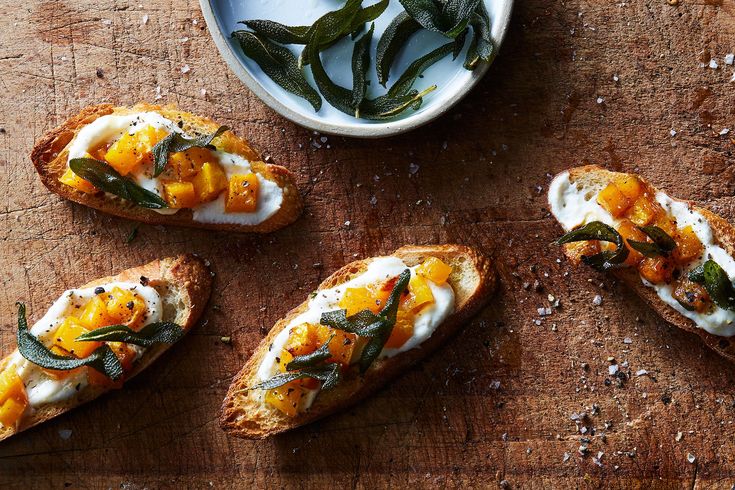 Here are several ways to cook and give butternut squash to your baby.
Here are several ways to cook and give butternut squash to your baby.
DIETS: Gluten Free, Vegan, Vegetarian
Prep Time 10 mins
Cook Time 40 mins
Total Time 50 mins
Course Baby Food
Servings 1.25 cup cooked mashed butternut squash
- 1 medium butternut squash (about 2.5 lb)
First peel the butternut squash, cut it in half the long way and scoop out the seeds with a spoon. Cut into smaller pieces and then you can:
Steam The Butternut Squash For Mashing or Serve As Finger Food
Bring 1 inch of water to boil in a saucepan fitted with a steamer basket and cover with a lid. How long to steam butternut squash? Butternut squash steams quickly – about 15-20 minutes, it depends on how big the pieces are. Pierce with fork and check when it’s ready.
Roast / Bake The Butternut Squash Serve As Finger Food (BLW)
Boil The Butternut Squash To Make Purees
For a fun crinkle-cut shape use a crinkle knife, it’s quick to cut and easy for babies to hold with their little hands because it doesn’t slide off. Cut into pieces (cubes, strips, or small sized half moon shapes).
Cut into pieces (cubes, strips, or small sized half moon shapes).
- steamed kale and butternut squash puree
- butternut squash and carrot puree
- butternut squash and cauliflower puree
- pureed butternut squash and cooked chicken or beef
- steamed broccoli and butternut squash puree
- cooked beans (black, white beans, chickpeas) and butternut squash puree
- steamed apples (or pear) and butternut squash puree
- peas and butternut squash puree
- mashed avocado and butternut squash puree
- pureed butternut squash with rice or oatmeal porridge
- puree cooked squash with a some broth or cream and add seasonings of your choice
- zucchini and butternut squash puree.
Have you tried any of these recipes? Your feedback is really helpful, please rate and leave a comment below recipe card!!
Disclaimer: The information, including but not limited to, text, graphics, images and other material contained on this website are for informational purposes only and not intended for medical advice.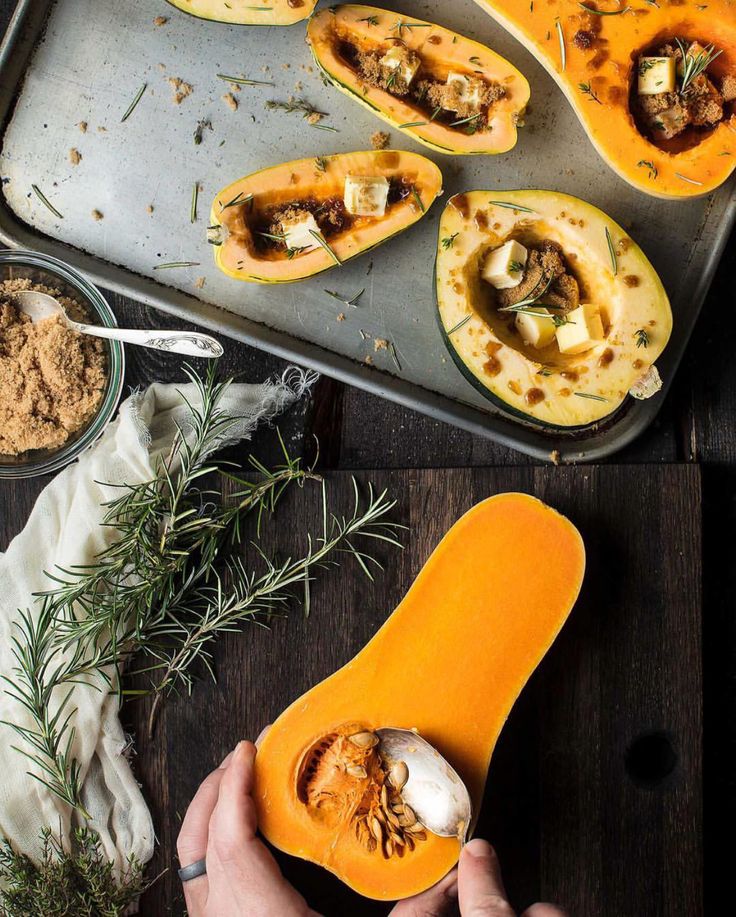 Please refer to my full disclaimer for more info.
Please refer to my full disclaimer for more info.
©ThrivingNest. Content and photographs are copyright protected and need prior permission to use. Copying and/or pasting full recipes to other websites and any social media is strictly prohibited. Sharing and using the link of this recipe is both encouraged and appreciated!
122 shares
Post Tags: #12-18 months#18-24 months#6-9 months#9-12 months
Similar Posts
Butternut Squash for Babies - MJ and Hungryman
Jump to Recipe
Butternut squash is an amazing first food for babies. Here's how to cook it as well as serving suggestions for 6 months and up.
Jump to:- When can babies eat butternut squash?
- Healthy benefits
- Is butternut squash safe for babies?
- Selecting the best squash
- Cooking Methods
- How to cut for baby led weaning
- How to Store
- Frequently Asked Questions
- Butternut squash recipes for babies
- How to cook butternut squash for babies
When can babies eat butternut squash?
Butternut squash can be offered to babies as soon as they’re ready to start solids, usually around 6 months. It’s important to remember that your baby is unique and that rather than going by the calendar, you need to make sure your baby is DEVELOPMENTALLY ready to start solids.
It’s important to remember that your baby is unique and that rather than going by the calendar, you need to make sure your baby is DEVELOPMENTALLY ready to start solids.
If you’re unsure, be sure to grab my FREE handout!
Healthy benefits
Interesting fact! Butternut squash is technically a fruit because it contains seeds, just like spaghetti squash, pumpkin, avocados, tomatoes.
It's not only delicious and versatile, but it is also loaded with vitamins, minerals, and antioxidants.
It's particularly high in:
- Vitamin A - important for eye and bone health and immune function
- Vitamin C - helps boost immunity and enhances iron absorption
- Magnesium and potassium - aid in optimal bone health
Just like mangoes, its bright orange color is due to an antioxidant called carotenoids, which gets converted into vitamin A. Carotenoids are fat-soluble compounds, so they are best absorbed with fat.
Last but not least, it's also a great source of both soluble and insoluble fiber.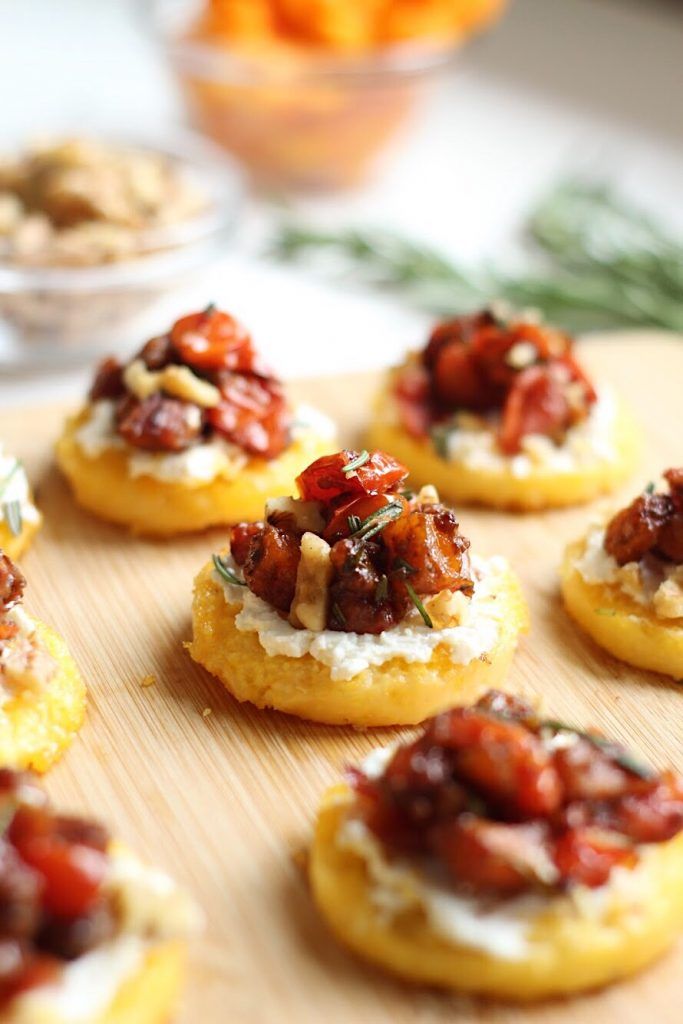
Is butternut squash safe for babies?
As long as it's offered in an appropriate size and texture, it is safe. Let me show you how! Butternut squash allergy is very rare as well.
Related: Best First Foods for Babies
Selecting the best squash
Look for one that's solid, dull dark beige in color, and doesn't contain any green streaks on the skin. Make sure there are no serious cuts or soft spots.
It should feel firm and heavy for its size. I like to pick up several that are similar in size and choose the heaviest one. Make sure the stem is intact.
Cooking Methods
It's VERY important that the squash is cooked until soft enough to be easily smooshed between thumb and forefinger.
Steamed
Place water in a pot, add steamer basket, and bring to a boil. Add the squash, cover, reduce heat to medium, and cook for 15 minutes.
Turn off the heat and let it sit covered for 5 minutes to continue steaming. It should be easily pierce-able with a fork.
Roasted
Roasting is the easiest and most flavorful way to cook the squash (or any vegetable for that matter). Soft and caramelized flesh - yes please! This is actually the only cooking method I use to cook our squash.
- Cut squash in half - Trim the stem end and cut the squash in half. Remove the seeds. Coat both the skin and flesh with oil. You can also add seasoning(s) at this time.
- Cook for 30-45 minutes, for 1 ½ to 2 pound squash.
How to cut for baby led weaning
6+ months old
Pureed - Add cooked squash into a blender and blend until smooth. Add breastmilk/formula, water, or even broth to thin out to desired consistency.
Mashed - Whether you are advancing in texture after doing purees or starting with baby led weaning, this is such an easy and versatile way to serve the squash to your baby.
Simply mash with the back of a fork and add to:
- Homemade baby oatmeal
- Quinoa
- Lentils
- Chia Pudding
- Overnight oats/quinoa
- Toast
- Yogurt
- Egg veggie pancakes
6-9 MONTHS OLD
Bigger is better and safer at this age so your baby can easily grab the food with their palm and bring to mouth.
Cut into thick strips or half-moon shapes. Again, the squash should be easy to smush between your thumb and forefinger.
Related: Right food size and texture for baby led weaning
9+ MONTHS OLD
As your baby develops their pincer grasp and is able to pick up small pieces of food using their thumb and finger, you can cut into small, bite-sized pieces. I still suggest continuing to offer larger pieces so they can practice taking bites.
I emphasize this because my son was the ultimate shoveler, and cutting into small pieces only made it worse. With my second baby, I offered her large pieces along with bite-sized pieces, and it’s definitely helped her to slow down and to take bites rather than shovel.
If you haven't already, this is a good time to introduce utensils. Your baby will most likely just play around or toss it. But it’s still great for exposure!
Try forking a piece of squash and plate on their plate. Be sure to continue modeling. They are like sponges and learn by watching you!
12+ months old
Continue practicing with those utensils! When serving mash, use the hand-over-hand method to guide your baby's hand to scoop with a spoon. Same goes for forking a bite-sized piece.
Same goes for forking a bite-sized piece.
Again practice practice practice, with a lot of patience sprinkled in. It's a skill that takes time to master.
How to Store
For uncooked
Whole squash can be stored in a cool, dark place for up to 3 months. Once cut, wrap the squash in plastic wrap or store in an airtight container for up to a week in the fridge.
For cooked
Store in an airtight container for 3-5 days in the fridge.
To freeze
You can either flash freeze or puree and freeze in a tray (I LOVE this one) for up to 3 months.
Frequently Asked Questions
Can I eat the skin of the squash?
It is edible and a great source of fiber, vitamins, and minerals. However, it really depends on the age of the squash. With some, the skin gets tender once roasted, but some have a thicker, unpleasant texture. I advise peeling for your baby, and for older children and adults, you can decide ;).
Can I season butternut squash for babies
Absolutely yes! While it's delicious on its own, you can easily boost the flavor by adding herbs and spices. Cinnamon is a classic, but cumin, curry powder, smoked paprika, and Italian seasoning (to name a few) are all great!
What should I do with the seeds?
Roast them! First rinse and dry thoroughly. Toss with some oil and seasoning, spread into a single layer on a baking sheet, and roast at 350°F for 15-20 minutes (stir halfway through).
They are not appropriate for babies, but make for a perfect snack for you! Be sure to nourish yourself, too.
Butternut squash recipes for babies
Its slightly nutty and sweet flavor makes for such a great addition to so many recipes.
- Meatballs
- Pancakes
- Sandwiches
- Pasta sauce
Did you make this recipe? Leave a rating below and let me know how you liked the recipe! Your feedback means so much to me!
How to cook butternut squash for babies
Butternut squash is an amazing first food for babies.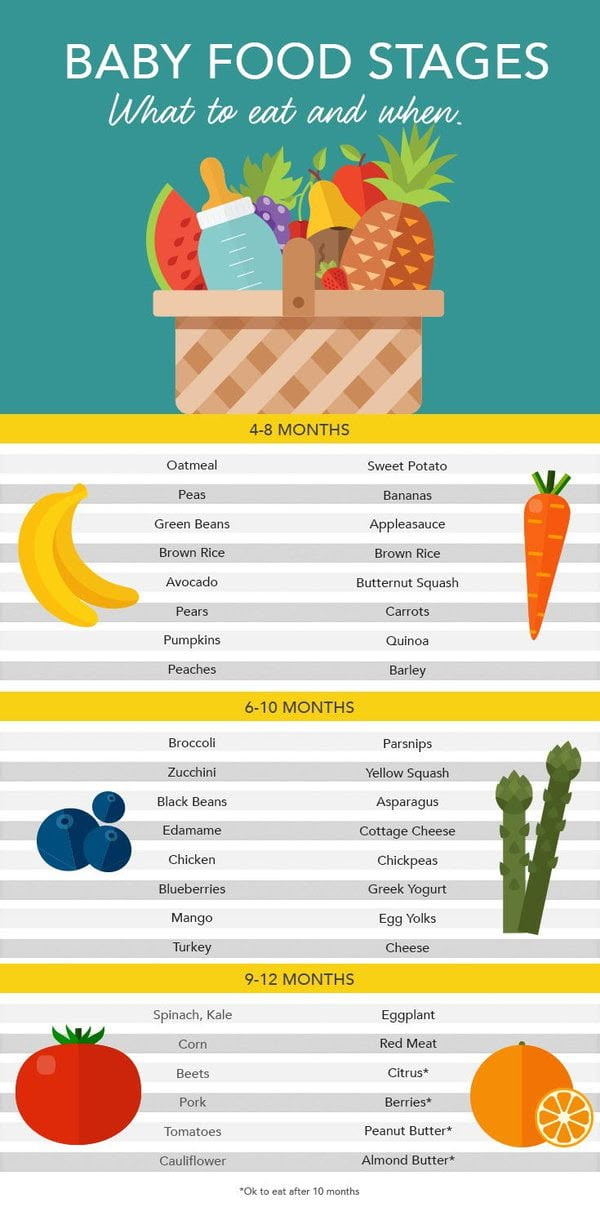 Here's how to cook it as well as serving suggestions for 6 months and up.
Here's how to cook it as well as serving suggestions for 6 months and up.
5 from 3 votes
Print PinPrep Time: 5 minutes
Cook Time: 40 minutes
Total Time: 45 minutes
Servings: 20
Author: Min | MJ and Hungryman
- ▢
Sheet Pan
- ▢
Baking Mat
- ▢
Steamer
- ▢
Freezer Tray
- ▢ 1 butternut squash
- ▢ 2 tablespoons oil, divided (if roasting)
- ▢ seasoning(s) of choice (if roasting)
Steamed
To cut: First wash and dry the squash. Using a sharp knife, cut ends off. Peel the skin using a vegetable peeler. Cut in half and scoop out the seeds. Then cut the flesh into half moon shapes.
Place water in a pot, add steamer basket, and bring to a boil. Add the squash, cover, reduce heat to medium, and cook for 15-20 minutes, until fork tender.
Let it sit covered for 5 minutes to continue steaming.
 Cut into desired size.
Cut into desired size.
Roasted
To cut: First wash and dry the squash. Place on a study cutting board (recommend placing a kitchen towel underneath) and trim the stem and bottom of the squash. Carefully cut in half lengthwise. Remove the seeds using a spoon.
Preheat oven to 400°F. Line a large baking sheet with parchment paper or baking mat.
Brush both halves with water and seasoning(s) of choice. Place the squash cut side down on the baking sheet. Roast until the flesh is soft and fork-tender, about 30-45 minutes, for 1 ½ to 2 pound squash.
Turn the squash over and allow to cool. Cut according to your baby's age. The skin should easily peel back.
- Store in an airtight container for 3-5 days in the fridge.
- To freeze: you can either flash freeze or puree and freeze in a tray for up to 3 months.
Calories: 29kcal | Carbohydrates: 4g | Protein: 1g | Fat: 1g | Sodium: 2mg | Calcium: 18mg | Iron: 1mg
Course Side
Cuisine American
Tried this Recipe? Tag me Today!Tag me @KidFriendly.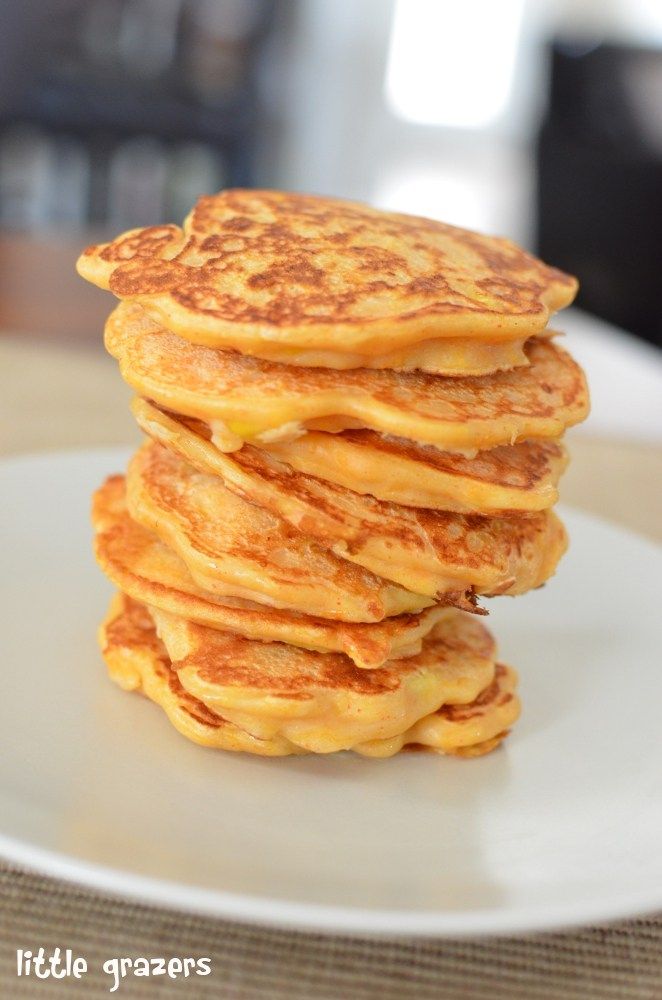 Meals today!
Meals today!
10 hearty pumpkin recipes / Soups, main courses and snacks - an article from the "How to cook" section on Food.ru
Pumpkin is an extremely useful product. It contains a large amount of vitamin C, B vitamins, which are good for skin health, and vitamin A, which is important for good vision. .
Which type of pumpkin to choose
There are dozens of varieties of pumpkins, but they are all divided into three types:
-
Butternut squash - the main feature in the juicy and sweet pulp. Butternut squash makes delicious desserts, cookies and smoothies, it can be used in salads, eaten raw or baked. The most popular variety of butternut squash is the butternut squash, which looks like a long pear.
-
Large-fruited pumpkin - its flesh is as sweet as that of nutmeg, but more dense and less juicy. Such pumpkins can be used to make meatballs and pancakes. From the pulp of a large-fruited pumpkin, you can prepare unusual fillings for pies, pies, dumplings and manti.
Beautiful, slightly flattened fruits of a large-fruited pumpkin can be stuffed with vegetables or meat and baked in the oven, and small pumpkins are also used as a container for serving stew or soup. nine0003
-
Hard-skinned pumpkin - it has a hard, dense skin and fresh flesh that absorbs tastes and smells well, so this pumpkin will be appropriate in homemade curries, and meat stews, and spicy soups. Hard-shelled pumpkins have the most delicious seeds: they can be extracted, roasted, and added to pumpkin purees, salads, and sprinkled on pumpkin muffins and cookies.
What additives can be used for pumpkin
Pumpkin has one interesting feature: well-chosen spices and seasonings can either emphasize its sweetness or muffle it. To prepare sweet pumpkin dishes, you can use cinnamon, vanilla, cardamom, as well as honey, orange and lemon juice, citrus zest, caramel, nutmeg. nine0003
For vegetable stews, dishes with meat and chicken, cumin, cumin, garlic, a mixture of peppers, curry, turmeric, paprika, balsamic and soy sauces, rosemary, olive oil are suitable.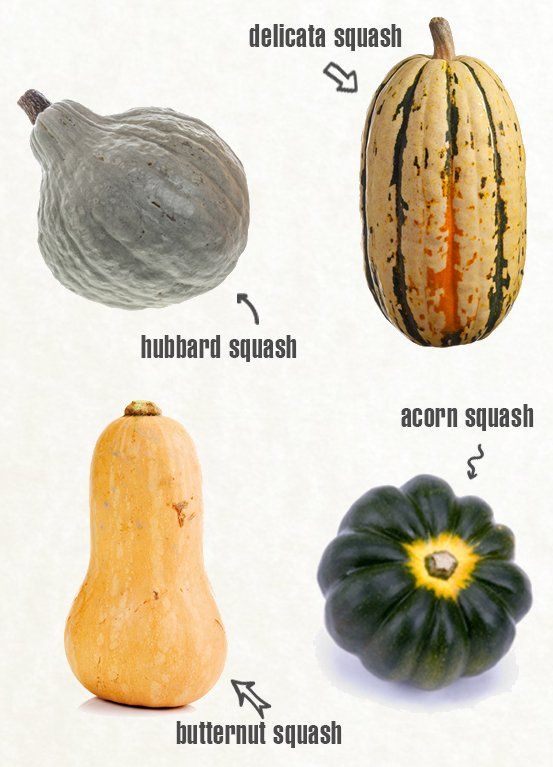
Easy pumpkin recipes to try
1. Porridge with pumpkin
Pumpkin pulp goes well with any cereal, but millet porridge with pumpkin is considered a classic. It will turn out especially tasty if you cook cereals not in a saucepan, but in pots in the oven or in a slow cooker with a languishing function: such porridge will be fragrant, tender, fluffy and crumbly. nine0003
Porridge with pumpkin can be prepared with water, cow's or vegetable milk: almond, coconut, soy. Porridge will acquire an unusual caramel taste if you cook it with baked milk. You can emphasize the taste of pumpkin porridge from millet with the help of spices: cinnamon, vanilla sugar. Dried fruits will be harmoniously combined with such porridge: raisins, prunes, sweet dried apricots, dates.
It is better to cut the pumpkin for porridge from millet into large slices, rather than grating it, so that the flavors of pumpkin and cereal do not mix, but emphasize each other. You can mix pumpkin with apples or pears, and sprinkle the dish with powdered sugar when serving. nine0003
2. Pumpkin pastry
The grated pumpkin pulp gives the cake dough juiciness, tenderness and beautiful bright light. The most popular baking option is sweet fragrant muffins with pumpkin in portioned forms. Orange pumpkin can be combined with carrots and walnuts, and dessert can be decorated with a icing cap or curd cheese cream. The dough for pumpkin muffins can be left plain white or made chocolate by adding cocoa or melted chocolate, make a filling of sour apple jam or sweet boiled condensed milk. nine0003
Pumpkin muffins are also prepared in a snack version, without sugar, with spicy additives. Pumpkin pairs particularly well with herbs de Provence, sun-dried tomatoes, and bold cheeses such as cheddar or gorgonzola cubes, olives, and olives.
By the way, muffins are not the only type of pastry with pumpkin. It is part of the dough for sweet pies, cakes, cookies, gingerbread and donuts, pumpkin is used to make soufflé, mousse and jam for a layer of cakes.
3. Pumpkin soup
Even those who do not like pumpkin and are generally indifferent to vegetables like such delicate creamy soups. You can use any vegetables for puree soup: potatoes, cauliflower and zucchini, sweet carrots or sweet potatoes, green peas.
Pumpkin puree soup is boiled in water, vegetable, mushroom or chicken broth, and if desired, cream or cheese is added. Pumpkin soup can be served with crackers, caramelized carrot slices, nuts, seeds, salted or cheesy popcorn, grated parmesan, bacon or sausages. nine0003
Ginger can be added to soup for a warming spicy version, cumin, rosemary or garlic.
Pumpkin puree without spicy and spicy additives is included in the diet of children. You can also skip the puree and make a hearty winter vegetable soup with meat or chicken.
4. Pumpkin jam
Pumpkin makes delicious jam. Due to the fact that pumpkin pulp absorbs aromas well, jam can be given any smell and taste. Pumpkin jam recipes often include an orange or lemon, dessert can also be flavored with ginger, cloves, cardamom. The pumpkin itself is used as the only ingredient or combined in different proportions with zucchini, apple, dried apricots, plums. nine0003
The pumpkin itself is used as the only ingredient or combined in different proportions with zucchini, apple, dried apricots, plums. nine0003
Pumpkin with hard pulp is usually chosen for jam, it will not fall apart during cooking, but if you are making jam or marmalade, you can use more tender varieties.
5. Meat stew with pumpkin
Potatoes and onions are a popular but not the only addition to pork, beef or chicken. You can stew pieces of meat with pumpkin and other light and healthy vegetables: zucchini, eggplant, sweet peppers, tomatoes, fresh or in their own juice. Seasonings for such a stew can be black pepper, nutmeg, cayenne pepper, ginger. For a heartier stew, top it with cubes of fried bacon and serve with a warm baguette. nine0003
Hearty pumpkin stew can be cooked in pots, slow cooker or cauldron. You can cook and serve a vegetable stew with meat and pumpkin in half a large pumpkin, using it as a mold.
6. Pumpkin fritters
Pumpkin fritters are a good alternative to the usual ones. Fragrant pumpkin grated on a coarse grater can be added to sweet pancakes on kefir with apple or carrot, flavored with raisins, dried apricots, prunes, cinnamon and vanilla. Lush pancakes or cottage cheese pancakes are prepared with pumpkin puree. nine0003
You can find a suitable recipe and make spicy savory pancakes for breakfast or as a side dish. In such pancakes, you can add grated potatoes, green onions and garlic, cheese, tomato paste, zucchini.
Pumpkin fritters are prepared with both wheat and whole grain, corn or buckwheat flour. They can be fried in butter or made into a low-calorie diet version in the oven by laying the dough on greased baking paper.
7. Oven baked pumpkin with orange
Sweet pumpkin pulp quickly becomes especially tasty and fragrant in the oven. This easy dessert can be prepared by placing pumpkin slices in a baking dish, drizzling with lemon or orange juice, liqueur (if the dish will not be eaten by children), brushing with honey, butter, sprinkle with cinnamon or vanilla sugar. You can put slices of orange, pieces of quince or apples on a baking sheet along with pumpkin.
This pumpkin can be served with sundae, caramel, applesauce, cream sauce, custard, lemon curd or simply with powdered sugar. nine0003
Pumpkin can be not only baked, but also fried: breaded or battered with spices.
8. Pumpkin Salad
Pumpkin is great for vegetable salads - you can use the sweet and juicy varieties raw or roast the firmer pieces, drizzle with olive oil and sprinkle with oregano, basil and other herbs.
Pumpkin goes well with all types of lettuce and greens: romaine, iceberg, arugula, spinach. You can add feta, feta cheese, goat cheese, dorblu and nuts: walnuts, cedar, Brazilian, macadamia and cashews. nine0003
Grilled shrimp, chicken or duck liver, pan-fried chicken pieces are put in a salad of pumpkin and herbs, and this salad is dressed with balsamic and olive oil with herbs.
Pumpkin can also be used to make a sweet salad - there are recipes with carrots, apples, pears, raisins, dates and sweet and sour dressing with honey and citrus fruits.
9. Pumpkin pasta
Pumpkin can be used to make a delicious pasta sauce, such as creamy, by mixing pumpkin puree with heavy cream, parmesan, garlic and herbs, or you can stew pumpkin with chicken or shrimp in vegetable broth, make tomato sauce with pumpkin, zucchini and sweet pepper. You can use a variety of pasta: spaghetti, penne, fusilli, nests. nine0003
Other Italian dishes can also be made with pumpkin: ricotta ravioli, minced pumpkin lasagna, pizza with chicken pieces.
10. Snack Pumpkin Fries
Unlike french fries, pumpkin snack is not harmful to health or figure. It looks no worse and is eaten very quickly. To cook pumpkin fries in the oven, you need to cut it into the same cubes that potatoes are usually cut into and roll in a mixture of olive oil, paprika, smoked paprika, salt, dried garlic and cornstarch, which contributes to the formation of a crisp. The sticks are baked on a baking sheet under grated parmesan and served with sauce: tomato, yogurt or cheese. nine0003
nine0003
What can be done?
Freeze pumpkin slices of varieties that are not stored for a long time. You can send pumpkin puree to the freezer in portioned containers and later use it to make sauces, puree soups, pumpkin cookies and muffins.
Learn how to choose and cook autumn fruits and vegetables:
-
5 easy lasagne recipes with vegetables and minced meat: for vegetarians and meat eaters
-
5 original autumn mushroom dishes: first, second and appetizers
-
7 fruit and berry desserts: prolonging the summer
Pumpkin – benefits for the body, photo, description
Pumpkin is a very ancient cultivated plant native to Central America, where it has been cultivated for 5 thousand years. In Europe and in Russia, it was to the taste and began to be widely cultivated. Pumpkin is a herbaceous annual plant with a climbing or creeping stem, reaching a length of 4 meters or more. Pumpkin leaves are large, entire, serrated, five-lobed, pubescent with hairs, as well as stems and petioles. Pumpkin flowers are dioecious, yellow or orange, 7 cm in diameter. The pumpkin fruit is a large multi-seeded berry, spherical, flattened or elongated. The peel or bark of a pumpkin can be of various thicknesses, and its shelf life depends on it. The color of the peel is orange, yellow, red, green, white, gray, with stripes or spots. The color of the pulp is orange or yellow. nine0003 Pumpkin ripened in the garden
Types of pumpkin
In Russia, 3 types are most widespread:
- Large-fruited pumpkin (Cucurbita maxima) well kept.
- Butternut squash (Cucurbita moschata) - heat-loving, large, maturing, with thin skin and tasty, sweet orange pulp, rich in carotene (provitamin A).
- Pumpkin or hard-barked (Cucurbita pepo) - early ripening, small, with woody fruit bark.
Pumpkin varieties
In the State Register of Breeding Achievements of Russia, according to the information for 2012, 41 varieties of large-fruited pumpkin were recorded, 9 - nutmeg, 12 - hard bark.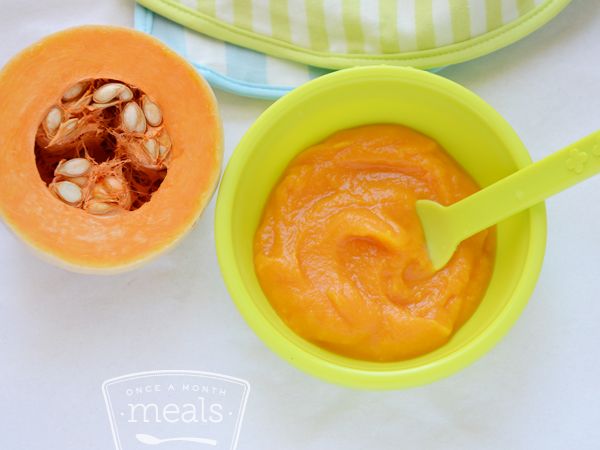
- Early maturing varieties of large-fruited pumpkin are bred for the middle zone: Medical, Michurinskaya, Olga, Slastyona, Ulybka, Rossiyanka; mid-season varieties: Amazon, Sweetie, Merchant. nine0014
- Early ripe variety of nutmeg pumpkin for the middle lane: Augustina; mid-season varieties: Matilda, Candied.
- Early ripe varieties of hard-barked pumpkin: Freckle, Gribovskaya bush 189, Bush orange, Spaghetti, Juno; mid-season varieties: Golosemyanka, Danae, Mozolevskaya 49.
This year I bought and sowed a pumpkin of the Beauty variety from Gavrish, about her my review.
Pumpkin variety KrasavitsaPumpkin Krasavitsa, description, photo
5-108 days before ripe fruits are harvested). The lashes are long, the fruits are bright red 4-8 kg with yellow-orange, tasty, crispy, medium thickness pulp. Fruits after collection are stored for 3 months, retaining their qualities. Can be grown through seedlings by sowing seeds in late April-early May.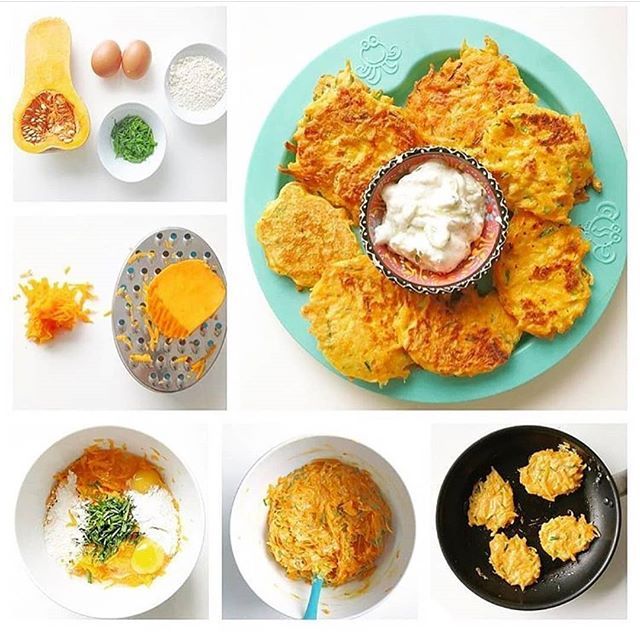 Sowing seeds in the ground is carried out after the last spring frosts, as well as planting seedlings. Seeds are also sown at a depth of 4-5 cm according to the scheme 100 cm by 150 cm. In May-June it was hot and dry, in July-August it was cold, the growing season increased, I think that's why the pumpkins grew small and still have not ripened. nine0003
Sowing seeds in the ground is carried out after the last spring frosts, as well as planting seedlings. Seeds are also sown at a depth of 4-5 cm according to the scheme 100 cm by 150 cm. In May-June it was hot and dry, in July-August it was cold, the growing season increased, I think that's why the pumpkins grew small and still have not ripened. nine0003 To test, I took one small pumpkin from a side branch to see what kind of flesh it has and what it tastes like. The taste is very average, almost not sweet (probably not enough heat), the color is orange, the seeds are mostly ripe. What does the pumpkin Beauty look like, see her photo in the garden and in the section.
Pumpkin variety Beauty growsUseful properties of pumpkin
Why is pumpkin useful for the body? Pumpkin fruits contain a large amount of sugars (up to 10%), pectin, carotene (up to 40 mg%), vitamin C, E, group B, PP, as well as potassium, magnesium, and iron. Due to this rich composition, the fruits of certain varieties are used for the production of vitamin concentrates, baby food and juices. nine0003
nine0003
Pumpkin - useful properties and contraindications for the health of men, women and children
Due to its composition, pumpkin is equally useful for healthy adults and children, even for babies from a certain age, it is also useful for a nursing mother. A healthy child from a year old can be given a pumpkin in any form. Adults and children can eat raw pumpkin even after heat treatment. I like raw pumpkin more, I like to crunch with fresh orange pulp.
There are no contraindications for eating pumpkin, it does not cause harm in any quantities. nine0182
Pumpkin and leaves in the gardenTreatment with pumpkin
Pumpkin has anti-inflammatory, analgesic, diuretic, mild laxative effect. Juice from pumpkin pulp is drunk for diseases of the kidneys and bladder, liver, prostatitis, metabolic disorders, inflammatory bowel diseases, constipation. Pumpkin juice has a calming effect on the nervous system and improves sleep.
- Useful pumpkin in the treatment of circulatory organs, has a beneficial effect in atherosclerosis, promotes the excretion of cholesterol from the body, cleanses it of toxins.
 nine0014
nine0014 - Pumpkin pulp increases bile secretion, it is recommended to use it in diseases of the liver and gallbladder fresh, 0.5 kg per day for 3-4 months.
- Pumpkin pulp improves kidney filtration, causes intensive removal of chlorine from the body, promotes good urination.
- For prostatitis, drink a glass of pumpkin juice twice a day, one hour before meals.
- Seeds (seeds) of pumpkin are used as an effective remedy against various tapeworms. They do not have a toxic effect on the body, so they are suitable for everyone. nine0014
- For angina pectoris, it is recommended to eat 3-4 tablespoons of pumpkin seeds daily.
Growing pumpkin outdoors
How to grow a pumpkin? Pumpkin is a heat-demanding plant, the best temperature for good plant growth is 24-28 degrees, it does not tolerate frost, it dies at a minimum sub-zero temperature. It grows well in sunny places without shading, young plants react especially badly to shading.
Pumpkin loves well-heated, rich in organic matter, moisture-intensive (chernozem, loam) soil, planting is desirable in holes with the simultaneous introduction of manure, humus or compost. Under the pumpkin during the growth period, it is desirable to apply liquid root dressings with organic fertilizers.
In the middle lane, it is often grown through seedlings, since the growing season is quite long. Seeds germinate at a soil temperature of at least 13-14 degrees, they are sown in heated soil or in pots with a diameter of 10 cm. Seedlings are planted in the ground at the age of 20-30 days after the last spring frosts. nine0003
The root system develops powerful, the adult plant is drought-resistant, but young plants require watering during the dry season, especially during flowering and ovary development. You can lose part of the crop if there is not enough moisture in the soil. Pumpkins are watered in wells, 1-2 buckets per plant.
To grow a large crop, pumpkin care requires regular care: watering, weeding, loosening the soil, root dressing. If the internodes of the stems are sprinkled with moist soil, additional roots form in these places, and the nutrition of the growing fruits improves. nine0003
If the internodes of the stems are sprinkled with moist soil, additional roots form in these places, and the nutrition of the growing fruits improves. nine0003
It is also useful to pinch the main stem and lateral vines after fruit formation; leave 4-5 leaves above the last fruit, unfruitful lateral lashes are removed. The yield of ripened pumpkin fruits in this case increases.
Pumpkin in the garden or in the country may well grow in the neighborhood with other plants; neighbors such as radishes, dill, parsley, coriander fill the free space in the garden until the pumpkin has grown a lot.
Pumpkin in the grassWhen to remove the pumpkin from the garden
It is necessary to harvest pumpkin for storage or processing as the fruits ripen in dry sunny weather in August or September, the last fruits in the middle lane are removed after the first frosts, when the tops of the pumpkin wither.
How to determine the maturity (ripeness) of a pumpkin? In a ripened pumpkin, the stalk (petiole) begins to dry out, it is cut off along with the stalk. If the stalk breaks off, the shelf life of the pumpkin will be significantly reduced, such fruits are first of all allowed for processing.
If the stalk breaks off, the shelf life of the pumpkin will be significantly reduced, such fruits are first of all allowed for processing.
Pumpkin storage
How can pumpkin be stored? Ripe pumpkin should be stored in a warm, dry place, protected from light. The most common storage of a pumpkin in a house or apartment is under the bed or under the sofa. Unfortunately, such storage causes inconvenience to the hostess, but it is possible to constantly monitor the condition of the pumpkins.
How else can you save a pumpkin? For some time, a pumpkin cut in half or cut into slices can be stored in the refrigerator, preferably in a special tightly closed container or in the vegetable compartment. nine0003
Pumpkin for the winter has already become customary in canned form. Only pumpkin or pumpkin with the addition of lemon, apples and other sour fruits and berries can be used to prepare jams, marmalades, juices. Pumpkin can be pickled, dried, candied fruits can be made from it.
Freezing pumpkin
Is it possible to freeze pumpkin and how to freeze pumpkin for the winter? Of course, to save, you can freeze the pumpkin in the freezer at home at temperatures up to -18 degrees. To do this, we cut the pumpkin into slices of 2-3 cm, peel it, cut it into pieces of the desired size and put it in a bag for freezing with a layer of 3-4 cm. Carefully put the bag with the pumpkin on the freezer shelf in one layer, and when it freezes, put it in a pile on a shelf or freezer drawer. It is best to freeze the pumpkin in portions so that a portion can be used at a time, for example, for porridge. nine0003
You can cook a lot of healthy dishes from pumpkin, but this is a topic for another article.
Author Olga Bogach https://svoimirukamivdome.ru/
Read also articles from other headings:
- Perennial daylily flower - photo,
- Platonovsky park of the city of Tula, photo,
- Schisandra chinensis (Far East) - medicinal plant, photo,
- Rowan red (common) - a tree in the garden, photo.
